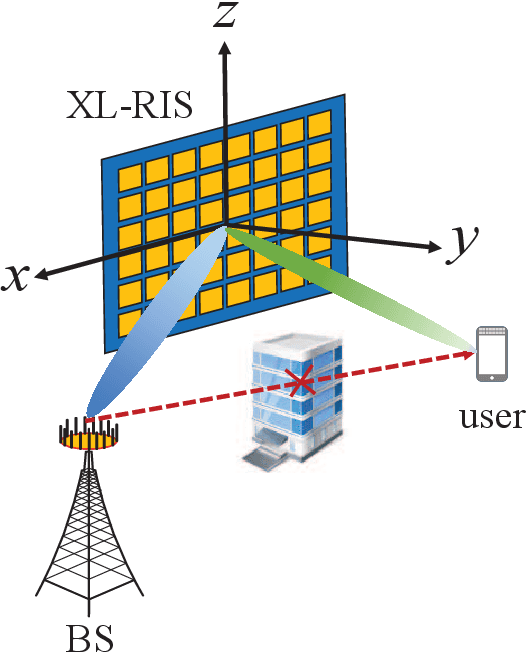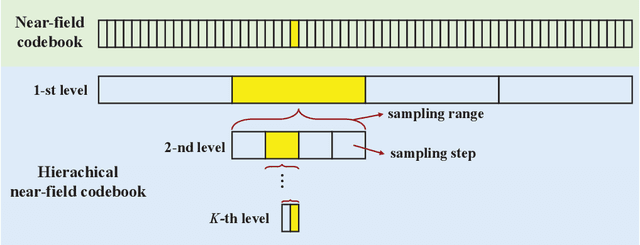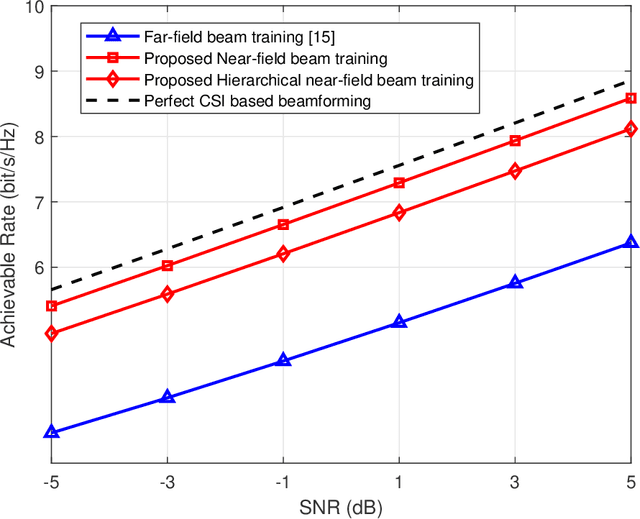Xiuhong Wei
The Optimal Tradeoff Between PAPR and Ambiguity Functions for Generalized OFDM Waveform Set in ISAC Systems
Mar 27, 2025Abstract:Integrated sensing and communications (ISAC) has been identified as one of the six usage scenarios for IMT-2030. Compared with communication performance, sensing performance is much more vulnerable to interference, and the received backscattered sensing signal with target information is usually too weak to be detected. It is interesting to understand the optimal tradeoff between interference rejection and signal strength improvement for the best sensing performance, but unfortunately it still remains unknown. In this paper, the trinity of auto-ambiguity function (AF), cross-AF and peak-to-average-power ratio (PAPR) is proposed to describe the interference and coverage related aspects for ISAC systems where multi-carrier waveform is usually assumed. We extend the existing orthogonal frequency division multiplexing (OFDM) waveforms in 5G to a generalized OFDM waveform set with some new members and a unified parametric representation. Then the optimal Pareto tradeoff between PAPR, auto-AF and cross-AF (i.e., the union bound) is developed for the generalized OFDM waveform set. To achieve the optimal Pareto union bound with reasonable computational complexity, we further propose a framework to optimize waveform parameters and sequences jointly. Finally, some practical design examples are provided and numerical results reveal that significant improvements can be achieved compared to the state-of-the-art 5G waveforms and sequences.
Near-Field Communications for 6G: Fundamentals, Challenges, Potentials, and Future Directions
Apr 12, 2022



Abstract:Extremely large antenna array (ELAA) is a common feature of several key candidate technologies for 6G, such as ultra-massive multiple-input-multiple-output (UM-MIMO), cell-free massive MIMO, reconfigurable intelligent surface (RIS), and terahertz communications. Since the number of antennas is very large for ELAA, near-field communications will become essential in 6G wireless networks. In this article, we systematically investigate the emerging near-field communication techniques. Firstly, the fundamental of near-field communications is explained, and the metric to determine the near-field ranges in typical communication scenarios is introduced. Then, we investigate recent studies on near-field communication techniques by classifying them into two categories, i.e., techniques addressing the challenges and those exploiting the potentials in near-field regions. Their principles, recent progress, pros and cons are discussed. More importantly, several open problems and future research directions for near-field communications are pointed out. We believe that this article would inspire more innovations for this important research topic of near-field communications for 6G.
Codebook Design and Beam Training for Extremely Large-Scale RIS: Far-Field or Near-Field?
Sep 21, 2021



Abstract:Reconfigurable intelligent surface (RIS) can improve the capacity of the wireless communication system by providing the extra link between the base station (BS) and the user. In order to resist the "multiplicative fading" effect, RIS is more likely to develop into extremely large-scale RIS (XL-RIS) for future 6G communications. Beam training is an effective way to acquire channel state information (CSI) for the XL-RIS assisted system. Existing beam training schemes rely on the far-field codebook, which is designed based on the far-field channel model. However, due to the large aperture of XL-RIS, the user is more likely to be in the near-field region of XL-RIS. The far-field codebook mismatches the near-field channel model. Thus, the existing far-field beam training scheme will cause severe performance loss in the XL-RIS assisted near-field communications. To solve this problem, we propose the efficient near-field beam training schemes by designing the near-field codebook to match the near-field channel model. Specifically, we firstly design the near-field codebook by considering the near-field cascaded array steering vector of XL-RIS. Then, the optimal codeword for XL-RIS is obtained by the exhausted training procedure between the XL-RIS and the user. In order to reduce the beam training overhead, we further design a hierarchical near-field codebook and propose the corresponding hierarchical near-field beam training scheme, where different levels of sub-codebooks are searched in turn with reduced codebook size. Simulation results show the two proposed near-field beam training schemes both perform better than the existing far-field beam training scheme. Particulary, the hierarchical near-field beam training scheme can greatly reduce the beam training overhead with acceptable performance loss.
Channel Estimation for Extremely Large-Scale Massive MIMO: Far-Field, Near-Field, or Hybrid-Field?
Sep 16, 2021



Abstract:Extremely large-scale massive MIMO (XL-MIMO) is a promising technique for future 6G communications. The sharp increase of BS antennas leads to the unaffordable channel estimation overhead. Existing low-overhead channel estimation schemes are based on the far-field or near-field channel model. However, the far-field or near-field channel model mismatches the practical XL-MIMO channel feature, where some scatters are in the far-field region while others may locate in the near-field region, i.e., hybrid-field channel. Thus, existing far-field and near-field channel estimation schemes cannot be directly used to accurately estimate the hybrid-field XL-MIMO channel. To solve this problem, we propose an efficient hybrid-field channel estimation scheme by accurately modeling the XL-MIMO channel. Specifically, we firstly reveal the hybrid-field channel feature of the XL-MIMO channel. Then, we propose a hybrid-field channel model to capture this feature, which contains both the far-field and near-field path components. Finally, we propose a hybrid-field channel estimation scheme, where the far-field and near-field path components are respectively estimated. Simulation results show the proposed scheme performs better than existing schemes.
 Add to Chrome
Add to Chrome Add to Firefox
Add to Firefox Add to Edge
Add to Edge